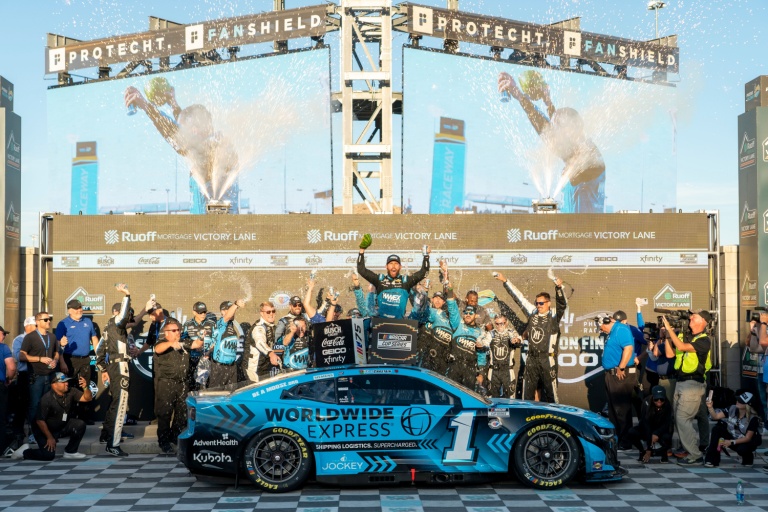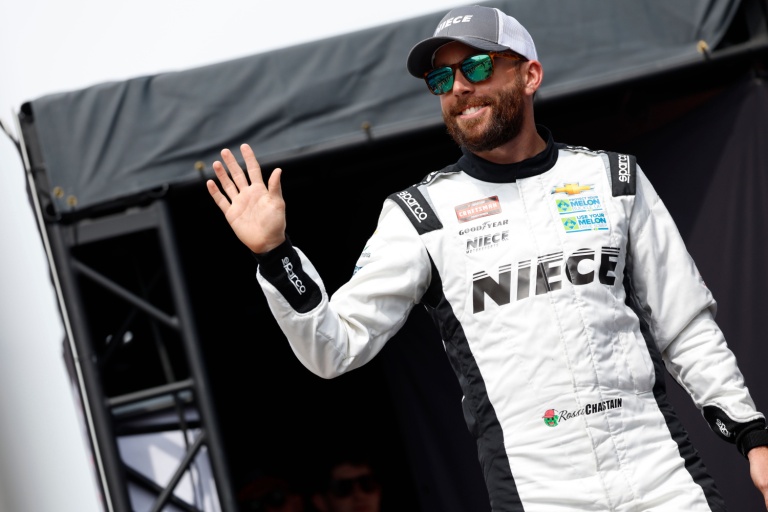In October 2022, the world of NASCAR witnessed one of the most astonishing and controversial maneuvers in racing history: Ross Chastain’s “Hail Melon.” Ross Chastain’s Hail Melon is a move that not only secured Chastain’s spot in the NASCAR Cup Series Championship 4, but also forced the sport to reconsider its rules and the very nature of competitive racing. This article explores the journey of Ross Chastain, the inspiration behind his legendary move, the science that made it possible, NASCAR’s response, and the lasting impact on the sport.
The rise of Ross Chastain: From melon fields to NASCAR
Ross Chastain’s journey to NASCAR prominence is a tale of perseverance and humble beginnings. Born into a family of watermelon farmers in Florida, Chastain spent his early years working the fields, learning the value of hard work and resilience. His first exposure to racing came through local tracks and regional circuits, where he quickly developed a reputation for his relentless drive and determination.
Despite lacking the financial backing that many of his peers enjoyed, Chastain’s work ethic propelled him through the ranks. By 2022, he had become a formidable competitor in the NASCAR Cup Series, driving for Trackhouse Racing. His underdog story resonated with fans, making him a beloved figure in the racing community. Yet his daring maneuver at Martinsville Speedway would forever etch his name into the annals of racing history.
Ross Chastain’s Hail Melon: How video game physics inspired real-world racing
The defining moment came on October 30, 2022, during the final lap of the Xfinity 500 at Martinsville Speedway. Chastain found himself outside the cutline for the championship race, facing elimination. Desperate and inspired, he executed a move he had only attempted in the video game “NASCAR 2005: Chase for the Cup.”
Instead of braking into the final turn, Chastain floored the gas pedal, deliberately slamming his car against the outside wall. He let the barrier guide him around the turn at full speed, passing five cars in a matter of seconds and crossing the finish line fast enough to secure his place in the Championship 4. The maneuver, quickly dubbed the “Hail Melon” in honor of his watermelon-farming roots, stunned fans, drivers, and officials alike. Videos of the move went viral, amassing millions of views within hours and sparking heated debates across the racing world.
This unprecedented act of creativity and risk-taking showcased Chastain’s ingenuity and highlighted the growing influence of video game simulations on real-world sports. The “Hail Melon” symbolized how unconventional thinking can disrupt even the most established traditions.

The science behind the wall-ride move
To understand why Ross Chastain’s Hail Melon worked, it’s essential to delve into the physics behind the maneuver. In traditional racing, drivers decelerate into turns to maintain control and avoid losing traction. However, Chastain’s strategy involved using the wall as a stabilizing force, allowing him to maintain maximum speed through the turn.
By pressing his car against the concrete barrier, Chastain effectively traded tire friction for wall friction. The wall prevented his car from spinning out, while its momentum carried it forward at a velocity unattainable through conventional racing lines. Although the move severely damaged the car’s right side, it held together long enough for Chastain to cross the finish line.
This technique, often seen as an exploited glitch in video games where physics engines fail to replicate real-world consequences, had never been successfully attempted in a professional race. Chastain’s ability to translate a virtual tactic into a real-life scenario demonstrated his creativity and willingness to take extraordinary risks.
Why NASCAR banned the move and the debate over innovation
The immediate aftermath of the “Hail Melon” was a mixture of awe and concern. While fans celebrated the audacity of the move, NASCAR officials quickly recognized its potential dangers. The governing body launched a review and ultimately decided to ban the maneuver, citing several critical reasons:
- Safety risks: The move could have resulted in catastrophic crashes if the car had lost control or collided with other vehicles.
- Structural integrity: Allowing wall-riding would incentivize teams to design cars specifically to withstand wall impacts, shifting the focus away from traditional driving skill and engineering.
- Sporting fairness: Permitting such tactics could undermine the spirit of competition, leading to chaotic and unpredictable racing strategies.
In 2023, NASCAR introduced a rule prohibiting wall-riding maneuvers, with strict penalties for drivers attempting similar moves. This decision sparked a broader debate about striking a balance between innovation and safety in professional sports. While some argued that Chastain’s move represented the kind of ingenuity that should be celebrated, others warned that unchecked creativity could compromise the integrity and safety of the sport.

The lasting impact on racing strategy and safety
Although Ross Chastain’s Hail Melon is now banned, its impact on NASCAR and the broader world of motorsports is undeniable. The incident highlighted the evolving relationship between video game simulations and real-world racing, as more drivers turn to advanced simulators for training and strategy development. Chastain’s maneuver demonstrated that even seemingly unrealistic tactics could become viable options under extreme circumstances.
The “Hail Melon” also sparked essential conversations about risk, innovation, and the role of human creativity in an era increasingly dominated by data and engineering. Chastain’s boldness reminded fans and competitors alike that racing is not just about machines and numbers, but also about the human spirit, intuition, and willingness to push boundaries.
As technology continues to blur the lines between simulation and reality, the “Hail Melon” legacy will endure as a testament to the power of unconventional thinking. It reminds us that there is always room for innovation and the unexpected, even in the most regulated and tradition-bound arenas.
Conclusion
Ross Chastain’s video game-inspired wall-ride at Martinsville was more than just a spectacular racing moment — a fusion of audacity, instinct, and the lessons of a lifetime spent overcoming obstacles. While NASCAR has since banned the maneuver to preserve safety and fairness, the “Hail Melon” symbolizes how creative problem-solving can shake up even the most established sports. As the boundaries between simulation and reality continue to blur, the spirit of Chastain’s innovation will inspire future generations to challenge the status quo and redefine what is possible in racing and beyond.
Follow us on X, Facebook, or Pinterest

